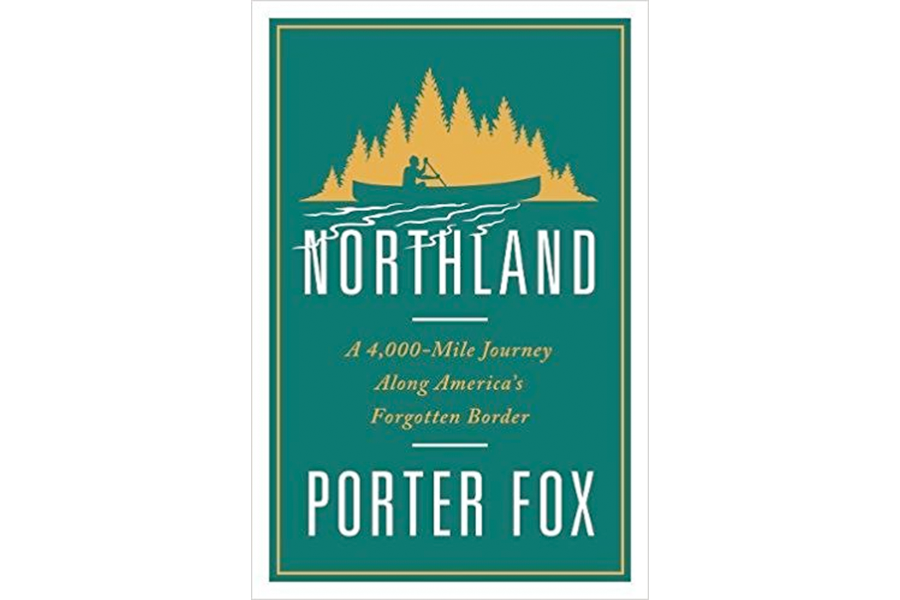'Northland' is an entertaining trip along America's 4,000-mile northern border
Loading...
“You don’t know what you’ve got til it’s gone,” sang the Canadian musician Joni Mitchell, and she might have been referring to the toy border that used to exist between her homeland and the United States. Howdy neighbor, may I see your license? Well then, have a nice visit.
But for all the hot air blowing from the White House concerning a southern “wall,” the president might consider that “the only known terrorists to cross overland into the US came from the north. Fifty-six billion dollars in smuggled drugs and ten thousand illegal aliens cross the US-Canadian border every year,” writes Porter Fox, who entertainingly, and with a wealth of historical storytelling, traverses all 3,987 miles of Lower 48 border (third longest international border [add Alaska and it is the longest], with 2,000 border agents [Mexico has nine times the number, plus private patrols], and all of what the Congressional Research Services deems sixty-nine miles of “operational control.”)
Fox’s trek along that border is chronicled in the keen-eyed and -eared Northland: A 4,000-Mile Journey Along America’s Forgotten Frontier. Not so forgotten that an errant slip of the paddle, let alone a campsite, on the wrong side of the line – if you get caught – isn't enough to get you into a lick of trouble. But Fox can’t help but trespass pretty much all the way from the coast of Maine to Minnesota’s Boundary Waters as the border is poorly marked if long in the making (border negotiations stared right after the Treaty of Paris was signed), giving that touch of jump and sparkle that every good travelogue needs.
Following the boundary line along Maine and New York, and then again once passed the Great Lakes, into the Boundary Waters of Minnesota, is comically complex canoeing (his canoe is equipped with a motor). “The [Diggity] stream runs to First Lake, then Eagle Lake, which connects to Third Lake, Maudsley Lake, and ten more lakes before reaching a portage that connects to the Saint John River.” Meanwhile, we are treated to the history of the Passamaquoddy peoples, the French fur trade of the 16th century, and the exploits of Samuel de Champlain in his early-17th-century attempt to found New France, and find a passage to La Chine and the glories of the East.
A bulk carrier (“The ship is almost the exact size of the sixty-story Carnegie Hall Tower in New York City, leaned over on its side. The bow is a seventh of a mile away from the stern”) that makes a circuit of the Great Lakes, picking up iron pellets here and dropping them off there, where it picks of grain for farther along, takes him on the boundary of those giant sweet waters, oceans unto themselves with their own weather systems. For all the hugeness of everything, Fox can be an intimately sharp observer of place, noting, for instance, that the northern cold makes light shine upward through the airborne frost and reduces the landscape to a charcoal sketch.
There is a good, long section where he encounters the Sioux (and company) protesters of the Keystone XL Pipeline running through reservation land, up near the border in North Dakota. Pipelines are notorious for springing everything from leaks to gushers, and the Sioux want no part of it and ignited a nationwide protest against crossing the reservation, desecrating sacred lands, and potentially befouling the major source of water for the reservation. This is Fox in journalist mode, though there is little doubt where his heart lies on the matter.
Additionally, “the protest had morphed into something larger. Things were not good on American reservations. Of the 4.5 million people from 565 federally recognized tribes in the US,” 30 percent live in poverty, the alcoholism rate is 500 percent higher than the national average, suicide is double the average (40 percent of the victims are 15 to 24), half finish high school, 40 percent of on-reservation housing is consider inadequate, and the unemployment at Standing Rock, where the protests were centered, stood at 80 percent. If that list isn’t shameful, then you have a high tolerance for shame.
The remainder of Fox’s journey is as natty and crisp, and quite lighter of spirit than the reservation story. One comical episode has him trying to enter a little snaggle-tooth blip on the straight line to the coast along 49’40” or fight, a eensy piece of the US protruding into Canada, but no way to get there except through Canada. The border patrols are deeply suspicious about why he wants to go to such an isolated spot. Then again, that is the leitmotif of the entire story.
This really is a forgotten land by those from the south, but not by those from the north. The vast majority of Canadians live along the border, but only a trimming of US citizens live there year around. In the US, “Northlanders have little interest in the rest of the Union, and the rest of the Union has little interest in its northern fringe.” (Unless fracking hits paydirt.)






